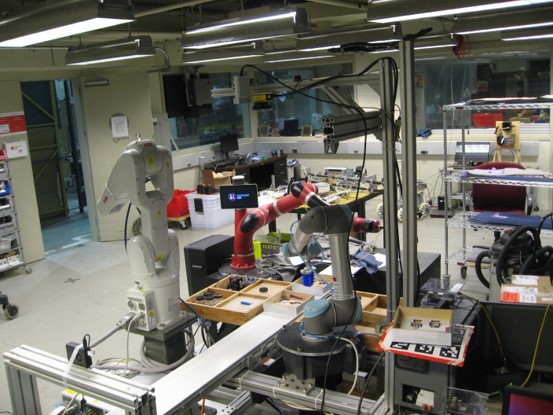Background of Fabric Fusing Project
The United States has been witnessing a steady decline in its domestic apparel manufacturing sector over the past few decades. A significant reason for this shift is the allure of international suppliers, primarily located in developing countries, who can offer considerably lower wage costs. This economic advantage has made it challenging for U.S.-based manufacturers to compete on price, leading many to outsource their operations overseas.
The apparel industry, with its traditional and labor-intensive processes, presents a golden opportunity for technological intervention and automation. In the current production landscape, human workers are intricately involved in every step of the process. From handling each piece of fabric to the meticulous tasks of picking and placing, the reliance on manual labor is profound. Such methods not only increase the chances of human error but also limit the speed and efficiency of production.
Objective of Fabric Fusing Project
Current processes for fabric fusing rely on manual labor that is tedious, uncomfortable, and slow, leading to high employee turnover. Additionally, manufacturers cannot afford costly, one-off robotic solutions. This project team seeks to catalyze an automated solution that minimizes custom hardware. These tasks, often characterized by their repetitive and monotonous nature, can be not only tedious but also physically uncomfortable for the workers. The prolonged engagement in such activities can lead to fatigue, decreased job satisfaction, and even health concerns over time. As a result, industries that rely on these manual processes often face the challenge of high employee turnover, which in turn leads to increased recruitment and training costs.
Many manufacturers find themselves in a predicament where the available robotic solutions are prohibitively expensive, especially when they require custom hardware tailored to specific tasks. Such bespoke solutions not only strain the financial resources of these companies but also limit their scalability and adaptability to changing production needs.
The goal of this project is to develop an automated solution that reduces the reliance on custom hardware, making it more accessible and affordable for manufacturers. By leveraging innovative technologies and streamlined design principles, this team looks to offer a solution that not only enhances production efficiency but also improves the working conditions for employees, ultimately leading to a more sustainable and competitive manufacturing ecosystem.
Technical Approach
This project team developed an end effector that can pick and place fabric and interlining piece parts and fabric bolts onto the fusing machine conveyor. In addition to the hardware component, the team developed open source software modules that can program robots from multiple vendors and leverage collaborative robots that can be easily positioned.
Participants in Fabric Fusing Project
Lead: Rensselaer Polytechnic Institute Partners: Interface Technologies, Hickey Freeman

